Keynote Speakers
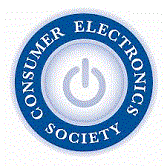
IEEE 2015 ICCE Berlin Keynote Speakers
More keynotes and more info will be posted soon...
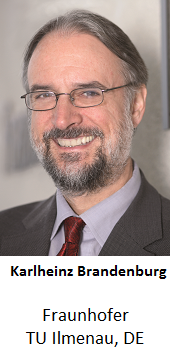 |
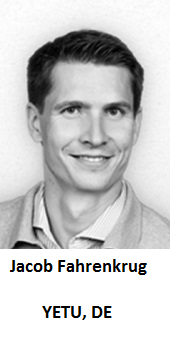 |
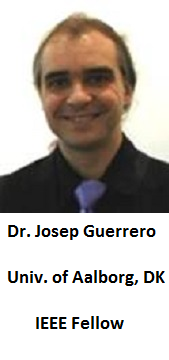 |
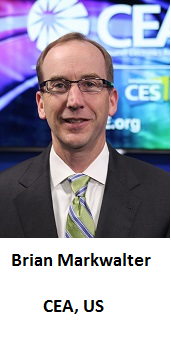 |
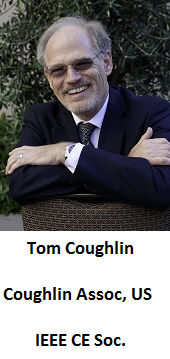 |
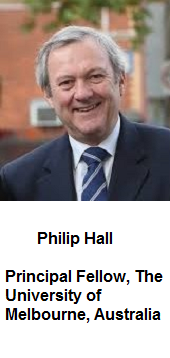 |
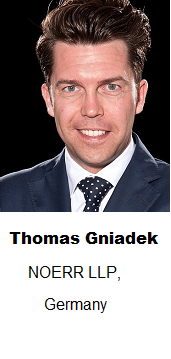 |
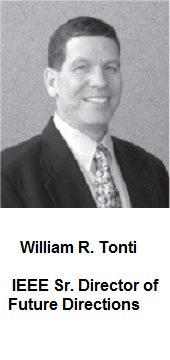 |
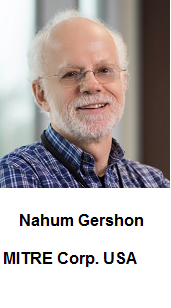 |
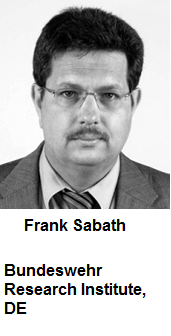 |
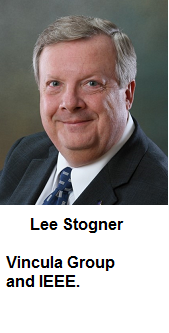 |
Karlheinz Brandenburg
Fraunhofer HHIAudio Developments
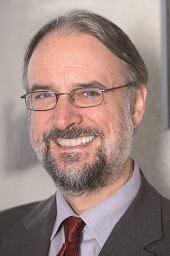
Abstract
Dr. Karlheinz Brandenburg has been a driving force behind some of today's most innovative digital audio technology, notably the MP3 and MPEG audio standards. He is acclaimed for seminal work in digital audio coding and perceptual measurement techniques, Wave Field Synthesis (WFS) and psycho-acoustics. Karlheinz Brandenburg is a full professor at the Institute for Media Technology at Technische Universität Ilmenau. At the same time he is the director of the Fraunhofer Institute for Digital Media Technology IDMT in Ilmenau.
Jacob Fahrenkrug
YETU, DEManaging IoT data at home: Striking the balance between personalisation and privacy
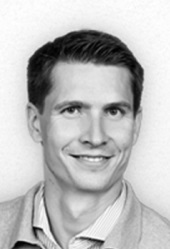
Abstract
We believe the true benefit from the smart home internet comes from intelligent integration of use cases across different sources and interoperation of smart devices. But there will never be an effective choice for the user if the platform has access to all these data points and activity scenarios without the active and conscious consent of the user. We need to create solutions that allow us to improve service quality and gather data, while letting the user decide which data they want to make available and to whom.Yetu enables customers to close their front doors and requires others to “ring the doorbell” before using resources captured in their homes. To do so, yetu secures all information gathered in the home by encrypting the relationship between a data point and its owner. Recreating the connection requires a unique key, which physically resides on the gateway that’s safely sitting in the customer’s home. Solely the customer decides if and when to turn the key and share information. Cloud operators can not access private data – without physically accessing the gateway. In cyber security debates, this is referred to as the concept of “trusted computing” with known devices.
We believe that this radical approach to privacy creates a paradigm shift and will disrupt current internet business models. It brings new value to customers by providing them with a virtual “front door” to their smart home. It safeguards their most sensitive information and puts them in charge of how it is used.
Biography
Jacob Fahrenkrug is yetu’s Chief Technology Officer (CTO). Jacob started his professional career at Hypoport Group, where he took technical responsibility for the mortgage market place in the Netherlands. Following that Jacob became Chief Software Engineer in charge of development and technologies for a business unit of Deutsche Post DHL. In 2014 he joined yetu as Lead Architect driving yetu’s open Smart Home Platform technologies. In May 2014 Jacob was appointed as yetu’s Chief Technology Officer. Jacob is a keen technologist and regular speaker at conferences on technologies, software architecture and agile software development.Josep Guerrero
University of Aalborg, DKNew Research Challenges in AC/DC Residential Microgrids
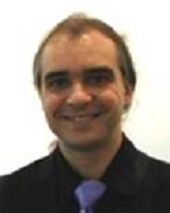
Abstract
A microgrid can be defined as a part of the grid with elements like distributed energy sources, power electronics converters, energy storage devices and controllable local loads that can operate autonomously in islanded mode but also interacting with the main power network in a controlled, coordinated way. Following the introduction of distributed control of these elements, cooperative control and hierarchical control schemes for coordination of power electronics converters in order to control the power flow and to enhance the power quality will be elaborated. Different technologies are combined together, such us power converters, control, communications, optimization, and so on. This way, energy can be generated and stored near to the consumption points, improving stability and reducing losses produced by large power lines. In distributed energy systems like microgrids, multi-agent systems technologies will be presented, including distributed control.Previous experiences in the Danish electrical system like the Cell Controller project used these technologies to balance dispersed energy generation and consumption. The focus of this presentation will be on the analysis, modelling and control design of power electronics-based microgrids, as well as power electronics control and communications. Further, the interconnection of microgrid clusters will be emphasized as an important step towards utilization of the smart grid concept. Examples of real sites including conventional islanded systems installed in islands and rural remote areas will be shown. Finally, low-voltage distribution systems and DC microgrids for residential applications and homes will be introduced. New worldwide projects to develop technologies for low voltage DC distribution systems will be shown.
Biography
Josep M. Guerrero (S'01-M'04-SM'08-FM'15) received the BS degree in telecommunications engineering, the MS degree in electronics engineering, and the PhD degree in power electronics from the Technical University of Catalonia, Barcelona, in 1997, 2000 and 2003, respectively. Since 2011, he has been a full professor with the Department of Energy Technology, Aalborg University, Denmark, where he is responsible for the Microgrid Research Program. From 2012 he is a guest professor at the Chinese Academy of Science and the Nanjing University of Aeronautics and Astronautics; from 2014 he is chair professor at Shandong University; and from 2015 he is a distinguished guest professor at Hunan University.His research interests are oriented to different microgrid aspects, including power electronics, distributed energy-storage systems, hierarchical and cooperative control, energy management systems, and optimization of microgrids and islanded minigrids. Professor Guerrero is an associate editor for the IEEE Transactions on Power Electronics, the IEEE Transactions on Industrial Electronics, and the IEEE Industrial Electronics Magazine; and an editor for IEEE Transactions on Smart Grid and IEEE Transactions on Energy Conversion. He has been guest editor of the IEEE Transactions on Power Electronics special issues Power Electronics for Wind Energy Conversion and Power Electronics for Microgrids; the IEEE Transactions on Industrial Electronics special sections Uninterruptible Power Supplies Systems, Renewable Energy Systems, Distributed Generation and Microgrids, and Industrial Applications and Implementation Issues of the Kalman Filter; and the IEEE Transactions on Smart Grid special issue on Smart DC Distribution Systems. He was the chair of the Renewable Energy Systems Technical Committee of the IEEE Industrial Electronics Society. In 2014 he was awarded by Thomson Reuters as Highly Cited Researcher, and in 2015 he was elevated as IEEE Fellow for his contributions on "distributed power systems and microgrids."
Brian Markwalter
SVP Research and StandardsConsumer Electronics Association (CEA), US
The Intersection of Health Care and Consumer Electronics
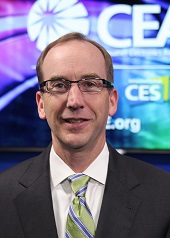
Abstract
Connectivity, sensors and mobile devices have filled the gap between costly, managed health care and personal health and fitness. Navigating this rich opportunity requires an understanding of the technologies involved, regulatory and economic pressures that work for and against adoption of CE in healthcare and which products are winning consumers’ hearts. In this talk, you will learn about the category of casual health and fitness devices, devices aimed at health management outside a hospital setting and the drivers affecting adoption of these technologies in coming years.
Biography
Brian Markwalter is senior vice president of research and standards for the Consumer Electronics Association (CEA) ®, the preeminent trade association promoting growth in the $223 billion U.S. consumer electronics industry and owner of the International CES. Markwalter is responsible for CEA’s extensive consumer research, market data and forecasting capability in addition to CEA’s accredited standards development program used by industry in millions of products every year.Tom Coughlin
President Coughlin Assocites, USVP IEEE CE Soc. Future Directions Comm.
The Future of Consumer Electronics
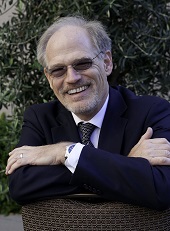
Abstract
Since 2013 the IEEE Consumer Electronics Society has had a group of Future Directions Committees and has participated in the broader IEEE Technical Activities Future Directions Committee. This talk will look at our activities over the last few years as well as activities planned for 2015 and beyond. These activities have contributed to IEEE CE Society conference sessions and speakers, Consumer Electronics magazine articles, IEEE standards activities and workshops. In 2015 we will expand upon our 2014 activities in Safe Advanced Mobile Power (SAMP) to include student mobile power design contests as well as accompanying workshops. We are also expanding the activities, begun in 2014, around consumer applications of the Internet of Things. The goal of the IEEE Consumer Electronics Society Future Directions Committees is to help create the future of consumer electronics and we welcome additional activities and topics to help us create that future.
Biography
Tom Coughlin, President, Coughlin Associates is a storage analyst and consultant. He has over 30 years in the data storage industry with multiple engineering and management positions at high profile companies.Dr. Coughlin has many publications and six patents to his credit. Tom is also the author of Digital Storage in Consumer Electronics: The Essential Guide, which was published by Newnes Press in March 2008. Coughlin Associates provides market and technology analysis (including reports on several digital storage technologies and applications and a newsletter) as well as Data Storage Technical Consulting services.
Tom is active with the IEEE Consumer Electronics Society, where he is Chair of Future Directions; SMPTE,;IDEMA; SNIA; the IEEE Magnetics Society and other professional organizations. Tom is also the Director of IEEE Region 6 (western United States) Tom is the founder and organizer of the Annual Storage Visions Conference (www.storagevisions.com), a partner to the annual Consumer Electronics Show as well as the Creative Storage (www.creativestorage.org). Tom is the general chairman of the annual Flash Memory Summit.
He received a B.S. in Physics and an M.S.E.E. from the University of Minnesota (Minneapolis) and a PhD in Electrical Engineering from Shinshu University in Nagano, Japan.
Philip Hall
Principal Fellow, The University of Melbourne (Australia)Director, RelmaTech (UK)
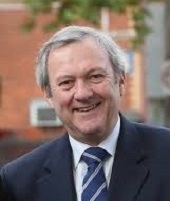
Abstract
Remotely Piloted Aircraft Systems (RPAS) – sometimes called Unmanned Aircraft Systems (UAS), Unmanned Airborne Vehicles (UAVs), Remotely Piloted Airborne Vehicles (RPAVs), or simply ‘drones’ – are an area of emerging technology that is gaining increasing worldwide notoriety in both civilian and military contexts. While RPAS can be an effective and efficient means of conducting particular operations for national security and social good, and are considered to have significant potential for a wide range of commercial applications, there are also many risks and issues that need to be acknowledged and addressed. Philip will provide a summary of considerations arising from two recent expert workshops on the topic that he organised and chaired in Melbourne, Australia (September 2014) and Washington DC (March 2015). He will also provide an overview of the UAE Government ‘Drones for Good’ Award held in Dubai and for which he was a finalist judge (February 2015); the ICAO RPAS Symposium, which he attended in Montreal (March 2015) as a guest of the ICAO RPAS Program Office; and the IEEE-USA Committee on Transport and Aerospace Policy (CTAP) Position Statement (July 2015) on the topic, which he authored for presentation to the US Congress and Administration.
Biography
Philip is a Founding Director of RelmaTech (UK), a newly formed company specialising in technologies and applications for the spatial management of remotely piloted vehicles in the Land, Marine and Air sphere of operations. Specialising in integrating business, science and technology in the design, development and delivery of practical solutions to complex issues, he also consults internationally, providing strategic business and project management services to major companies, organisations and government agencies. Philip is also a Principal Fellow in the Department of Electrical and Electronic Engineering at The University of Melbourne (Australia), and previously held tenures as Adjunct Professor at The University of Western Australia (2011-15) and The University of the South Pacific (2008-10). He is a Fellow of both the Australian Institute of Management and Engineers Australia, and a Senior Member of IEEE. In IEEE he is a member of the Aerospace and Electronic Systems Society (AESS) and the Society on Social Implications of Technology (SSIT). In AESS he is Vice Chair of the Unmanned Airborne Vehicle (UAV) Technical Panel, and in SSIT he is an elected member of the Board of Governors where he is Chair of both the Distinguished Lecturer Program, the Conference and Events Program and Immediate Past Chair/Coordinator of the Chapters Program. He is a frequent guest editor for the IEEE Technology and Society Magazine, and an Associate Editor (Aviation) for the Journal of Unmanned Vehicle Systems (JUVS). A former Aeronautical Engineering Officer in the Royal Australian Navy, Philip holds a BEng and MEng in Aeronautical Engineering from the Royal Melbourne Institute of Technology (Melbourne, Australia), and is a graduate of the Royal Navy Engineering College (UK) and the Australian Defence Command and Staff College.Dr. Thomas Gniadek
NOERR LLP, DETechnical Standards in the Electronics Industry: Do you no longer own your inventions?
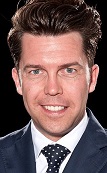
Abstract
For decades, it was highly attractive to participate in technical standardization proceedings (e.g. within IEEE). Parallel patent protection for inventions submitted to the standardization committee suggested high leverage on the commercial side in case the patented invention gets accepted as mandatory feature of the new standard (resulting so-called standard essential patents). Courts around the globe have restricted the commercial leverage of standard essential patents by establishing the rule that the patentee must license such patent rights on Fair, Reasonable, and Non-discriminatory (FRAND) terms. In the landmark decision C-170/13 (Huawei vs. ZTE) [to be handed down on 16.07.2015], the Court of Justice of the European Union (ECJ) will most likely redefine the commercial leverage of standard essential patents, thereby questioning the value of participation in standardization: According to the ECJ, FRAND means that the patentee can no longer stop an infringer from using his invention, as long as the infringer claims to be a “willing licensee”, i.e. being generally interested in obtaining a license. The presentation will explore the practical impact and consequences of this landmark decision for future standardization projects.
Biography
Dr. THOMAS GNIADEK. Rechtsanwalt. Associated Partner. Practice Group Intellectual Property: Trademarks & Patents. Career: Legal studies at the University of Konstanz, the Cardiff Law School (UK), and the University of Heidelberg (first state exam). Having been a PhD candidate of Prof. Dr. Thomas Dreier M.C.J., Karlsruhe Institute of Technology (KIT), he received a PhD (“Dr. iur.”) with summa cum laude from the University of Freiburg. Admitted to the Munich Bar/Chamber of Lawyers. Experience as an Attorney-at-Law (“Rechtsanwalt”) and patent litigator with an international law firm and with a renowned IP boutique law firm. With Noerr since 2015. Focusing on patent law, national and international patent infringement proceedings, validity proceedings, licensing, technology transfer, R&D agreements, employee inventionWilliam R. Tonti
IEEE Sr. Director of Future DirectionseFuse Design and Reliability
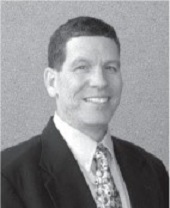
Abstract
The Electronic Fuse (e-Fuse) Programmable eFuse designs present an integration challenge in modern CMOS processing. The power level to program a fuse, and the programming methodologies leverage reliability mechanisms which all other elements in a design avoid. A high degree of eFuse process control and circuit design is required in order to guarantee operation. Almost all eFuse types are one time programmable and are limited to “one chance” programmable. This paper will discuss selected eFuse technologies describing the design philosophy, electrical programming and characterization, the physics of failure, and some of the many applications an on chip programmable element provides.
Biography
Dr Tonti received the B.S.E.E. with honor (1978) from Northeastern University, an MSEE(1982) and a PhDEE(1988) from the University of Vermont. He holds an MBA(1983) from St. Michael’s College. Currently Dr. Tonti is the Director of Future Directions at the IEEE. Retired from IBM he held the positions of IBM senior technical staff member , senior manager, and master inventor. . Dr. Tonti has authored numerous contributed, keynote , and invited papers, and holds over 290 U.S. patents. Dr. Tonti is a member of tau beta pi, eta kappa nu, a fellow of the IEEE, a former advisory board member of the IEEE Transactions on Device and Material Reliability, a recipient of the IEEE 3’rd millennium medal, the 2008 Reliability Engineer of year, and a former ABET engineering curriculum evaluator. He is a past IEEE Reliability Society President. Dr Tonti’s 250’th US patent issue was read into the US Congressional, and the State of Vermont records, naming Dr. Tonti as one of the leading US inventors.Nahum Gershon
Senior Principal Scientist, MITRE Corporation, IEEE, US“Life Sciences, Engineering, and Consumer Technology: New Challenges and Opportunities”
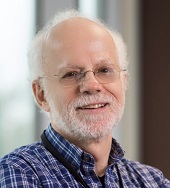
Abstract
We usually tend to hear about new developments in technology: New computing technology, new consumer technologies – not just refrigerators and TV sets – but also mobile devices, personal monitoring devices and so on. What is typically not discussed enough are the impacts of these new technologies on the human condition, changes in human and societal attitudes and changes in human activities and work style that could make these new technologies much more effective. The IEEE Life Sciences Technical Community (LSTC) was established in order to bring together engineers, physical, social & life scientists, and health care professionals. This has provided and will continue to provide new opportunities for learning from each other and working together to realize the full potential of the new technologies and their human and social impact. Another potential benefit from this synergy is integrating the new trend of patients' participatory role in their own health care treatment with professional health care.
Biography
Nahum Gershon focuses on social media, the Internet of Things and Everything(!), strategic planning, visualization, cloud computing, combining creative expressions with technology and real-time information delivery, presentation & interaction in mobile, wearable as well as traditional devices including how they could improve both organizational environments and our personal lives. Nahum Gershon has served in many capacities at the IEEE over the years and is a Senior Principal Scientist at the MITRE Corporation. Nahum is a well-known community organizer, mentor, and communicator and is quite socially oriented. He has a significant international & multicultural background (a citizen of the world, speaking a number of languages) and is right and left brain enabled. He enjoys life!Frank Sabath
Head of Directorate, Bundeswehr Research Institute for Protective Technologies and NBC-Protection (WIS), DE“Upcoming EMC Challenges”

Abstract
Since the early days of radio communications, it has been known that a spark gap generates electromagnetic waves which are capable to cause interference or noise in various electronic and electrical devices such as radio receivers and telephone communications. As a reaction on increasing complaints of electromagnetic disturbance the Law on Telegraphy Installations from 1892 defined in §12 “… electric equipment must be designed in a way that interferences do not occur”. The main objective of this regulation was the protection of radio service (first consumer electronics) against disturbances caused by the ignition system of cars. Since this first EMC law was issued electronic devices became an essential part of nearly all areas of modern live. In his keynote Frank will summarize present and future EMC challenges, particular those that are related to consumer electronics. Novel challenges that originate from technological developments like smart phones, power line communication or smart grid will be explained. Frank Sabath will provide an overview on alternative attempts to ensure that future electronic systems and devices are compatible to each other and main functions are not disturbed by (unintended or intended) electromagnetic interferences.
Biography
Dr. Frank Sabath (M’94–SM’04) received the Dipl.-Ing. degree in electrical engineering from the University of Paderborn, Paderborn, Germany, in 1993, and the Dr.-Ing. degree from the Leibniz University of Hannover, Hannover, Germany, in 1998. From 1993 to 1998, he was with the C-Lab, a Joint Research and Development Institute of the University of Paderborn and the Siemens Nixdorf Informationssysteme AG, Paderborn, Germany, where his responsibilities included research activities on numerical field calculation and the radiation analysis of printed circuit boards. Since 1998, he has been with the Federal Office of Defense Technology and Procurement (BWB). Currently, he is head of the directorate on Balanced Nuclear Protection Measures and Nuclear Hardening, Electro-Magnetic Effects, Fire Protection of the Bundeswehr Research Institute for Protective Technologies and NBC-Protection (WIS), Munster, Germany. He is the author or coauthor of more than 110 papers published in international journals and conference proceedings. His research interests include investigations of electromagnetic field theory, High-Power Electromagnetics, investigations of short pulse interaction on electronics, and impulse radiation. Dr. Sabath served as Ultra Wide Band (UWB) co-chairman of the EUROEM 2004, Magdeburg, Germany as well of the EUROEM 2008, Lausanne, Switzerland. Currently he is the President Elect of the EMC Society, an Associate Editor of the IEEE Transactions on EMC, member of the board of directors of the IEEE EMC Society and chair of the IEEE Germany Section EMC Society Chapter. Due to his outstanding service the EMC Society presented him the Laurence G. Cumming Award in 2009 and the Honored Member Award in 2012. He is a Member of the IEEE Electromagnetic Compatibility (EMC), Antennas and Propagation (AP), Microwaves Theory and Techniques (MTT) societies, and a member of URSI Commission E.Lee Stogner
President, Vincula Group, IEEE, USIEEE Transportation Electrification Committee (TEC) and the State of the Electric Vehicle Industry With Respect to Consumer Electronics

Abstract
Lee Stogner will speak on the IEEE Transportation Electrification Committee, TEC, and the State of the Electric Vehicle Industry With Respect to Consumer Electronics. This Committee is one of several IEEE Initiatives that were developed to provide growth opportunities for the IEEE and its members. This Committee is a venue for discussion, debate and information sharing on the latest Transportation Electrification developments among a vast international community of IEEE members and non members. The IEEE Transportation Electrification Committee is home to innovators, inventors, and engineering in the emerging field of Transportation Electrification. The Committee's scope includes, Advanced Charging, Battery Technologies, Drive Trains, Electric Vehicle Advancements, Development of relations with Industry Leaders, Plug In Electric Vehicles and the Smart Grid and Telematics. Products / Services of the Initiative include, conferences, publications, standards, education workshops and more. Our goal is to drive the transformation for clean, efficient, connected and safe vehicles. More information on the Initiative can be found at http://electricvehicle.ieee.org
Biography
Lee Stogner is the President of the Vincula Group, a consultancy business in Systems Integration, Business Process Improvement, Project Management and the Internet of Things. Lee has over 30 years of design, consulting, project management and business development experience across a range of industries. Lee has driven growth at companies that include Digital Equipment, Fluor Corporation and Rockwell International. Customers around the world have benefited from Lee's expertise and leadership. Throughout his working career, Lee has been active in both local and international professional activities. Lee is the Chair of the Carolinas' Engineering Cluster and a past Director of the IEEE Board of Directors. Today, Lee is active in promoting the development of advanced transportation through his participation in the IEEE Smart Grid Initiative, the IEEE Energy Policy Committee, the IEEE Internet of Things Initiative and as Past Chair of the IEEE Transportation Electrification Initiative.Stefan Mozar
Dynexsys, AUS, Guangdong University of Technology, CN, IEEE Fellow, CPEngWireless Charging
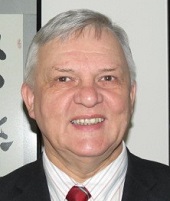
Abstract
This tutorial will provide an overview of the inductive and capacitive wireless charging methods. Wireless charging is an upcoming technology, even though its concepts have been around for many years. Manufactures claim over 90% efficiency, but are reluctant to explain how they obtain these results. The method of efficiency calculation will be discussed. A systems overview will be provided, plus some hints will be provided on how to avoid design pitfalls.
Biography
Stefan Mozar is a graduate of the University of New South Wales (UNSW). He obtained his engineering degrees from there. He obtained an MBA from the University of Technology, Sydney (UTS). He has considerable design experience in large signal design for consumer products. His work in this area has been recognized with patents, awards, and published papers. He has taught at a number of Australian, Asian, and British Universities. Stefan is an IEEE Fellow, and a Fellow of the Institution of Engineers, Australia. He is a registered Chartered Professional Engineer, and an IEEE Distinguished Lecturer.Tutorials
... and more tutorials coming soon
In the meantime you can enjoy 2014 ICCE-Berlin keynotes speeches and interviews @ IEEE CESoc TV